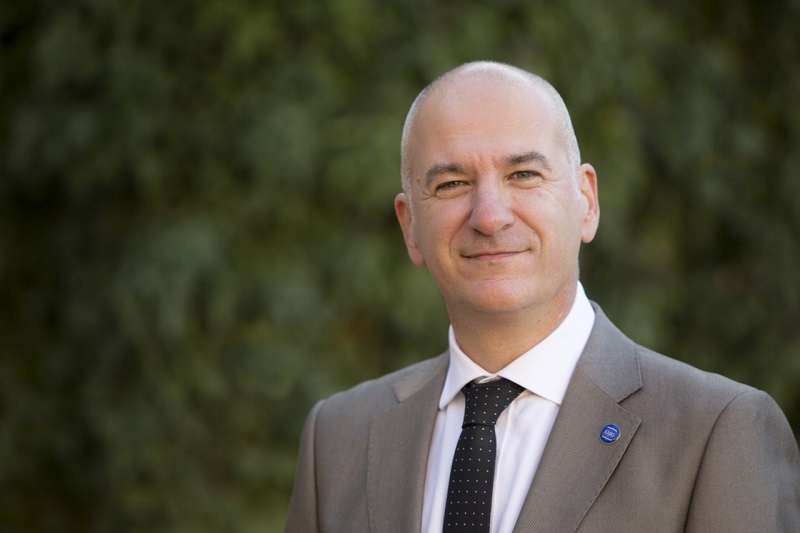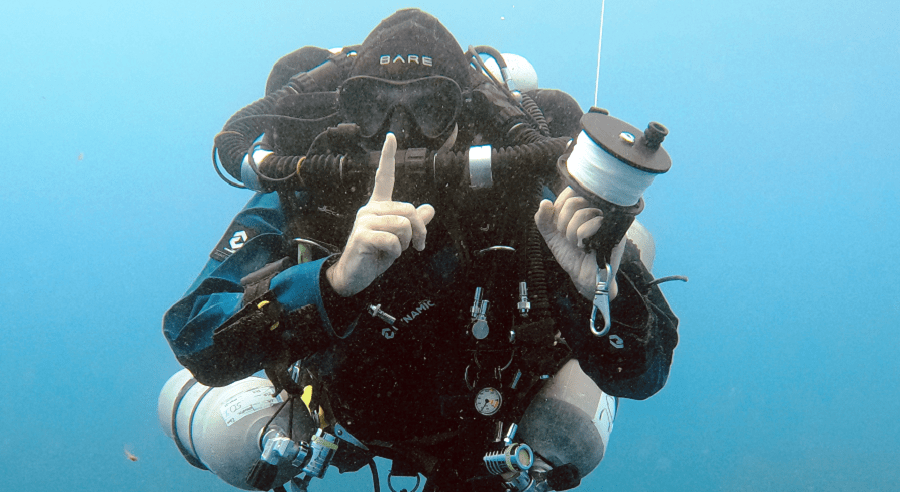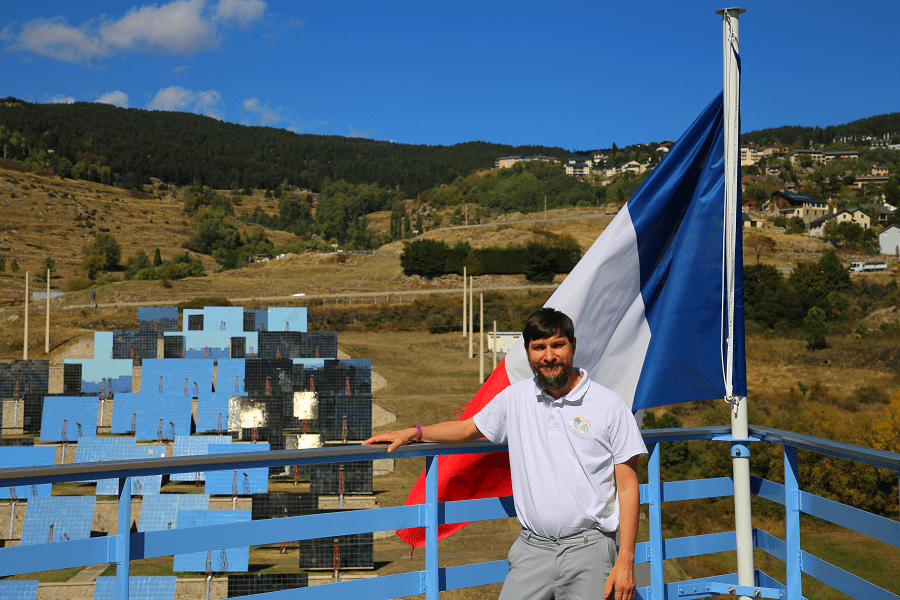University of Girona (UdG) is a public institution integrated into the system of Catalan state universities. The university was opened in 1991, but its prototype has existed in Girona since 1446. It was then that the Estudi General training center was created, which had the right to award academic degrees in such fields as rhetoric, grammar, philosophy and theology, law and medicine.
In 1991, a special Decree of the Government of Catalonia established the new University of Girona.
The University is considered one of the main engines of the regional socio-economic sphere. At the same time, the university is quite cosmopolitan and open to international cooperation, it offers a variety of educational and research programs for students and scientists from all over the world.
The university includes three separate campuses: Montilivi – the latest campus, a cluster of ultra-modern buildings; Barri Vell – consists of restored old buildings and is part of the historical heritage of the city of Girona; City Center – created on the basis of the former Pedagogical College. The university also has an ultramodern science and technology park.
Quim Salvi, Rector of the University of Girona, is a computer science graduate of the Polytechnic University of Catalonia with a doctorate in industrial engineering and an award in engineering from the University of Girona. Professor at the Department of Computer Architecture and Technology, Member of the Computer Vision and Robotics (VICOROB) Research Group, Visiting Professor of Ocean Systems Laboratory at Heriot-Watt University (UK). He is the main researcher of several national and European projects in the field of computer vision and underwater robotics.
In his interview, Quim Salvi told us about the main educational and research programs of the university, its goals, and objectives:
What educational programs are offered at the University of Girona (UdG)?
UdG offers education in all areas: art and humanities, social and legal sciences, natural sciences, architecture, technology, and medicine. In total, we offer 49 different undergraduate degrees and 13 programs that provide for the so-called “double diplomas” (dobles titulacions).
In addition, the University of Girona offers 41 master’s degrees, of which 17 are inter-university, that is, they are coordinated with other universities.
I would like to highlight the program – Erasmus Mundus (a student exchange program created by the European Union to increase the European students’ mobility and improve the quality of higher education by financing academic cooperation between Europe and the rest of the world). We offer two programs – tourism and materials science, which are highly valued by the European Union.
Regarding doctoral degrees, UdG coordinates 14 programs, six of which are inter-university. Therefore, we can say that our university is present in almost all knowledge areas, and most of the students’ scientific research can be carried out within our university.
There are three campuses on our university territory, which are engaged in both research and teaching. The subjects of study are very diverse, they include natural resources, tourism, nutrition, communications, medicine, cultural heritage, composite materials, industrial technologies, computers, robotics, sociology…
I would also like to mention the double degree program. This area is becoming more and more popular at our university: a student who studies one and a half to two years longer (the standard study program is four years) can receive two diplomas in related professions. True, this offer is geared towards students who are academically brilliant and can withstand the progressive and intensive learning rate.
UdG also has a system of affiliated schools (escoles adscrites), where one can study in the following professions: physiotherapy, physical and sports activities, performing arts and multimedia, marketing and logistics management. Tourism is offered by the affiliated schools, as well as, the Faculty of Tourism at the UdG.
What is the UdG collegiate town?
The UdG university model is very similar to Oxford, the universities of Salamanca, Santiago or Bologna.
Girona is a city of about 100,000 inhabitants, with a community of 15,000 students and 1,200 staff (faculty and administrative), as well as 1,500 people who work in the science and technology park. We can say that it is impossible to imagine Girona without UdG. Just as you can not imagine UdG without Girona.
University life is present intensively on all campuses, as well as beyond. There are bars and restaurants, student apartments, libraries, concert halls … The University of Girona is an ideal place for both living and studying.
The university currently has 36 classrooms. This is a lot when compared to other universities in Catalonia and Spain. UdG classrooms host lectures covering many thematic areas, among them natural ecosystems, contemporary art, legal culture, sports, tourism, geography, and medicine, including autism.
During the 2018-2019 academic year, the network of UdG departments held 552 events, 150 of which were retreats. University trustees invested about 1 million euros.
Our university intends to become even more involved in the socio-economic and cultural development of the city of Girona and its territory, to make Girona a region of knowledge in the field of innovation, by analogy with other European regions.
What are the benefits of Erasmus? Which countries do you have agreements with? Which countries are most popular with Erasmus students?
The most famous is the Erasmus mobility program between the countries of the European Union, but we also actively participate in the SICUE mobility program between the Spanish universities (Facultad de Ciencias de la Educación) and the Prometeo program (student exchange with Latin America).
UdG is one of the universities that allocates the most resources to the DRAC program, which promotes mobility between universities in Catalonia.
Our university is the first in Spain to raise funds for the KA102 program, which allows our students to go to study on other continents.
Last year, the University of Girona signed 651 agreements, of which 42 are new. The countries with whose universities we have the largest number of agreements signed are Italy, Belgium, and France in Europe, as well as Mexico, Colombia, and Brazil in Latin America.
UdG belongs to nine international universities’ networks.
Which courses are most in-demand today?
The most popular UdG courses are those that prepare for the most in-demand professions in Catalonia today. The area that is most in demand is health, specifically Nursing and Medical degrees. Law, Science, Psychology, and Tourism are also in high demand.
The number of people who want to study is almost double the number of places at such faculties as sociology and psychology, as well as closely related faculties that allow double degrees (business administration and law, and biology and biotechnology).
How many foreign students study at UdG?
UdG welcomes students of all nationalities. 80% of our students are residents of Girona and its environs (Osona, Vallès Oriental, and Alt Maresme). The remaining students come from Catalonia, the Catalan-speaking regions (Balearic Islands, Valencia, Northern Catalonia, and Andorra), as well as from other countries of the world, such as France, Colombia, and Ecuador. However, this year we have students even from Kenya, South Korea, Uzbekistan, Macau, Sudan, India, Iran, and Bangladesh.
What is your attitude toward distance learning? Are there any distance learning programs at the university?
We are convinced that education improves when there is direct contact not only between the teacher and the student but also between the students themselves. We focus on face-to-face lectures, during which teachers can directly interact with students. Face-to-face sessions should be innovative and include new teaching forms.
It is also true that in some cases a form of blended learning is allowed – this is a method that combines the advantages of face-to-face and virtual interaction. The key to success is balance, taking into account the merits of each of these methods.
UdG currently offers semi-remote courses in architecture and construction, psychology, and business economics.
Talking about innovation in education, what could you say about your university? What methods do you use?
UdG has been working in the field of innovative education for many years. Teaching innovation programs were launched many years ago and relate to cooperative, project, and problem-based learning, as well as gamification. These innovations are most often applied in areas such as physics, mathematics, law, and medicine.
All the accumulated experience was integrated into the UdG21 project (UdG of the 21st century), which is responsible for the innovative learning development at our university.
These forms of learning are becoming increasingly popular. For example, all medical research for students is organized based on problem-based learning (aprenentatge basat en signal or ABP).
I shall give an example. Students studying medicine are given a specific task, and they have to find a solution using materials provided by teachers and based on their own initiative also. Thanks to this innovative technique, our students’ final exams are among the best in Spain.
The University of Girona is a university with a “human face”.We like to say that we are a University where the proximity between the teachers and the students allows a greater adaptation between the development of the classes and the pace of learning and, in general, a much more personal relationship. We are a medium-sized university in a medium-sized city, and, I repeat, we are more focused on close human relations between teachers and students, which, however, is also typical of all mountainous territories, including Andorra.
As for employability – over the past 3-5 years, how many students in percentage found a job after completing their studies at your university? Do you have agreements with companies or maybe there is some kind of unified employment support system?
Degrees that offer the best chance for employment in Catalonia are engineering, especially computer science, as well as nursing and economics according to statistics.
One of our main tasks is to assist students in work placements. This is why we have developed an extensive internship program, as they are one of the main ways students enter the labor market after completing the learning process.
The student job search support system is managed by the university business office through JobTeaser, a customizable platform that allows you to track supply and demand in the market, as well as, publish business events information. Currently, 600 European universities, 70,000 companies, and 2.5 million students and graduates are participating in this project.
The university also has a special school – Escola de Competències, where students and graduates are taught business interview skills and how to look for a job more efficiently. We also offer group and individual training, as well as mentoring.
Finally, UdG has been conducting activities aimed at promoting entrepreneurship and creating new businesses since 2018.
Is research conducted at your university? In what areas? Can you please give examples of interesting recent research?
The University of Girona has a special position in terms of research on all indicators, including the number of published scientific articles in influential journals and the number of defended dissertations. Last year, about 1,000 articles were published in prominent journals, and about 332 research works were carried out, including 56 international ones.
UdG has 67 research groups with the SGR status (quality standard of the Generalitat of Catalonia) and 7 TECNIO groups (accreditation of the Generalitat of Catalonia).
117 doctoral dissertations were defended during the past academic year.
Knowledge and Development Foundation (Conocimiento y Desarrollo – CyD) puts UdG in tenth place in Spain in terms of research results, with particular emphasis on chemistry (third place) and industrial engineering (fourth place).
Last year, the most effective research results were achieved in areas such as health, water, chemistry. and tourism.
For example, some UdG researchers have been able to selectively modify carbon spheres, and this will obviously have a significant impact on the new solar panels production.
We are working on projects that promote more sustainable agricultural development, including the use of biopesticides and biostimulants. Furthermore, several prototypes of autonomous underwater devices were created to map the seabed.
UdG is an international benchmark in the use of graphics and image processing for medical research, including scanners with three-dimensional images, which aid disease diagnosis and monitoring, as well as, detection of multiple sclerosis lesions, localization of prostate and skin cancers, as well as breast cancer. Our university cooperates actively with medical centers.
Studies have been actively conducted recently based on the use of 3D images to study cancer cells and create new treatment methods.
UdG is one of the 100 most sustainable universities in the world according to the GreenMetric World Ranking rating (developed by the University of Indonèsia). What initiatives have you taken to achieve this?
Last July, the University of Girona defended and approved the Declaration on Climate Emergencies (Declaració d’Emergència Climàtica). In fact, UdG plays a leading role in the fight against climate change thanks to the Fridays4Future initiative, which is closely related to our university student program. This Declaration is the clear political position of the UdG Environmental Plan (approved in 1998), which aims to combat climate change. This is one of the pillars of our sustainable development strategy.
Secondly, we have developed sustainable mobility initiatives. In addition to launching programs such as “Come to UdG by Bicycle”, new mobility-related actions have been taken: electric bikes network with parking lots and charging points; a system for issuing student loans for the purchase of electric bikes.
UdG cafes minimize the use of plastic and ensure trade development in local organic products.
UdG approved a strategic plan focused on the development of projects related to artificial intelligence. What kind of project is this?
University of Girona decided to try to anticipate events that will determine the future and proposed the concept of “sum of intellects” (suma d’intel·ligències), recognizing that education, the development of science, culture, and the evolution of humanity as a whole in the coming years will be determined by a combination of natural, collective and artificial intelligence.
UdG wants the new sum of intellects paradigm to focus on a person in a more holistic way, that is, focus on expanding human capabilities, rather than personal loss of relevance in the advent of new technologies.
Thus, this synergy or sum of intellects is a new source of opportunities that UdG wants to develop, especially, for students who will live in a very difficult situation and who will need to adapt to knowledge and professions that do not yet exist.
The university community endorsed the UdG concept after a long debate.
The sum of the intellects should be the basis of the modern method of learning, which is far from the programmed method. Humanism, science, and technology should underlie modern models of teaching, research, and knowledge transfer.
Thus, the UdG 2030 Strategic Plan or the sum of intellects aims to make a positive and differentiating leap in the history of human development starting with Girona and Catalonia as a whole.
Has UdG conducted any joint education programs with Andorra?
We traditionally and historically maintain close relations with Andorra, because this is our border territory and one of the fundamental elements of our internationalization strategy. UdG participated in many POCTEFA projects (European programs of cross-border cooperation between Spain, France, and Andorra).
UdG is involved in two POCTEFA projects: one dedicated to lifelong learning, and the other to water quality in mountain rivers.
In general, UdG is the author of research projects in the field of tourism, natural heritage, art, science, and education. For example, for several years the students of the Faculty of Tourism have been involved in the strategic positioning of Andorra tourism among Spanish operators.
We also participated in international conferences with Andorra on sustainable development and environmental protection.
Proof of the collaboration between UdG and the University of Andorra is the UNIVERS project – a network of cross-border universities that participate in the Erasmus KA2 competition organized for European universities, including the universities of Girona and Andorra.
Another example is the collaboration in the field of art with professors Joan Bosch and Francesc Miralpeix to create a joint reference publication, which was the result of a collaboration between the Government of Andorra and the University of Girona.
We are convinced that the future of the European university system depends on international cross-border alliances. And we want to create the Pyrenean axis, which will connect all the universities in this area.
Interview: Ximena Bravo











